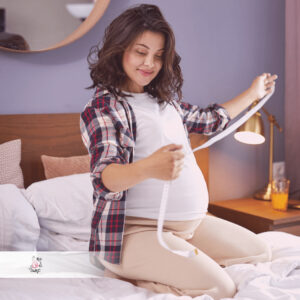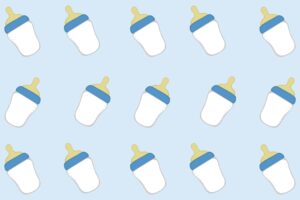Breastfeeding Must-haves


Many women want to prepare for breastfeeding while they are pregnant to ensure they are ready once baby arrives. There are two essential items you need for successful breastfeeding:
- A baby
- Breasts
The wonderful thing about breastfeeding is that you often don’t need much at all! Below are a few things you may find helpful, but they are by no means essential for breastfeeding to be successful.
- A good breastfeeding book. New mums often have questions when it comes to breastfeeding, and having a good quality book to rely on is so helpful. There are various options available, so take some time to choose one which answers the questions you have. Of course, books can never replace the support of other women who have breastfed or are currently breastfeeding, so find your local support group and speak to friends who have breastfed to get their advice too.
- Quality nursing bras. It can be helpful to invest in a few good nursing bras, including both structured bras for the daytime and supportive bras for sleeping. As well as providing support and comfort, these can make breastfeeding in public easier, as they clip undone at the strap for ease of access. Be aware that during the later stages of pregnancy and in the first weeks after giving birth, your breasts will likely change size and shape. A good bra fitter will take this into account when they measure you. Try to avoid underwire because this can cause uneven pressure on milk ducts and may make you prone to blockages. Try Nabta’s nursing bra fitting services and get to learn more.
- A pump. Many women think a pump is mandatory in order to breastfeed, but this is not the case. Certainly, if you plan to return to work whilst breastfeeding, a good quality, double electric pump will be a valuable investment. Alternatively, a breast pump can be very useful if you have delivered prematurely or are having milk supply issues. If you are only anticipating occasional separation from your baby, you may find that a manual hand pump will suffice and avoid the cost of an electric pump.
- A nursing pillow. There are many different pillows on the market designed to help with getting your baby into the right position for breastfeeding. Whilst these can be helpful, consider that regular pillows might work just as well and be equally malleable (the bonus being, you probably already have a ready supply!)
- Nursing clothing. Clothes made for breastfeeding have flaps and concealed openings that allow for easier breast access. In all honesty, almost any loose fitting top can be used for breastfeeding and, by layering with other tops and shirts, you can maintain discretion whilst feeding in public. You may, therefore, only need to invest in a few items of clothing designed for breastfeeding (helpful, as they can be costly and may have limited use once you stop breastfeeding).
- Nursing cover-ups. There are many nursing covers available that aim to make breastfeeding in public more discreet, whilst allowing you to see your baby (and them to see you) as they feed. It is a matter of individual preference, but wearing a cover can make feeding whilst out and about a lot easier. Some children dislike being under a cover as they get older, but by then you may be feeling more confident about breastfeeding discreetly in public. You may find that a lightweight blanket, or muslin works equally well. If you do buy a nursing cover, try to get one that is light and breathable.
- Nipple cream and breast pads. It is not uncommon to leak milk in the early days of breastfeeding. You might find that whilst feeding from one breast, the other one also produces milk. Breast pads are useful for absorbing this milk and preventing milk stains on your clothes. Whether or not you do leak milk is no reflection of milk supply. It is possible to buy reusable breast pads that can be washed, which can save a significant amount of money if you breastfeed for an extended period of time. As for nipple cream (such as those containing lanolin), you may find it useful during that first week when sore nipples can be common. Having some cream in reserve might be worthwhile, but not everyone gets painful nipples when breastfeeding and if you are not having any discomfort, there is no reason to start using these creams.
For more information try our at-home lactation consultation and get to learn more.
Sources:
- La Leche League International
- The Womanly Art of Breastfeeding, 8th edition.
Powered by Bundoo®













































